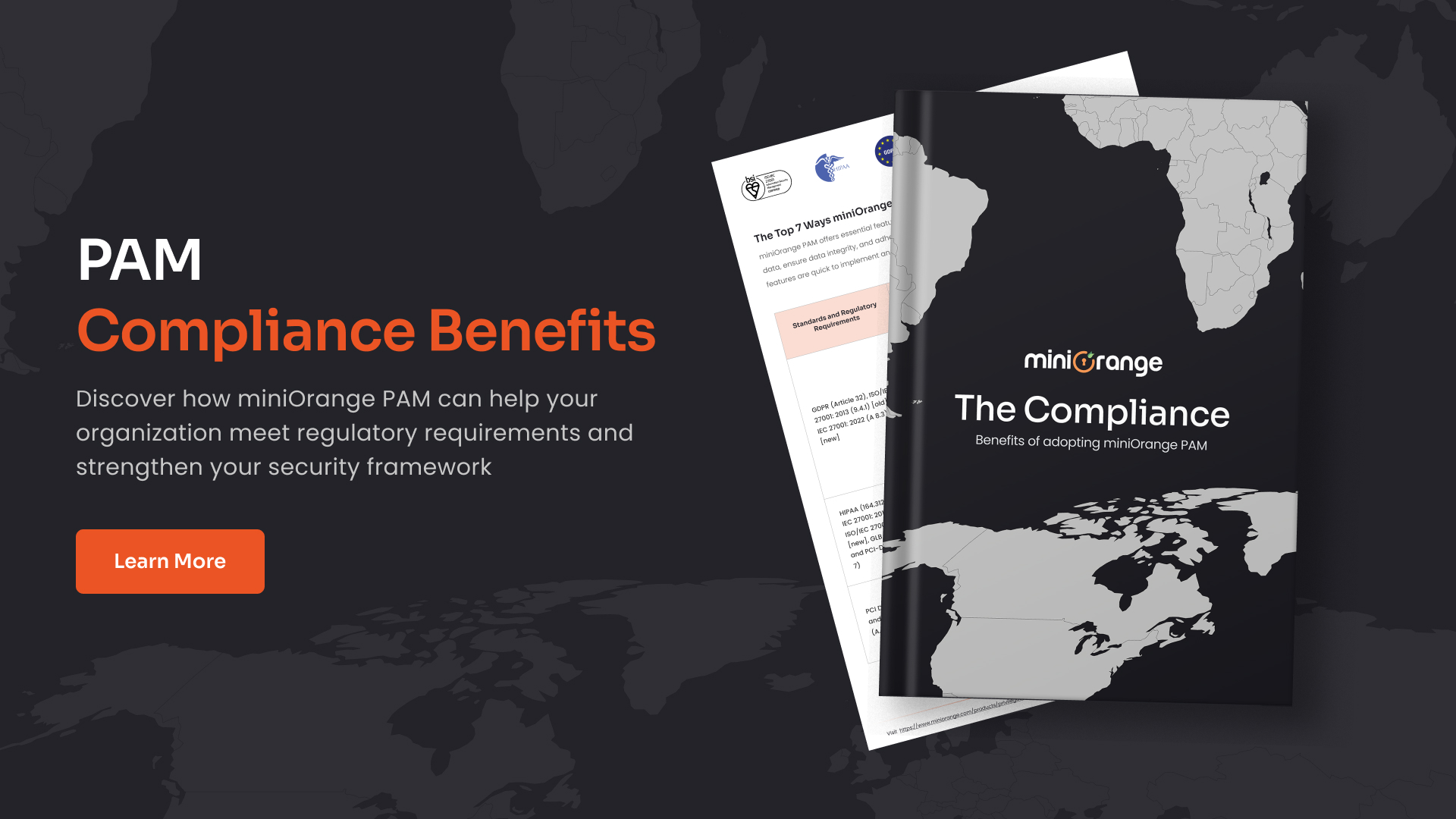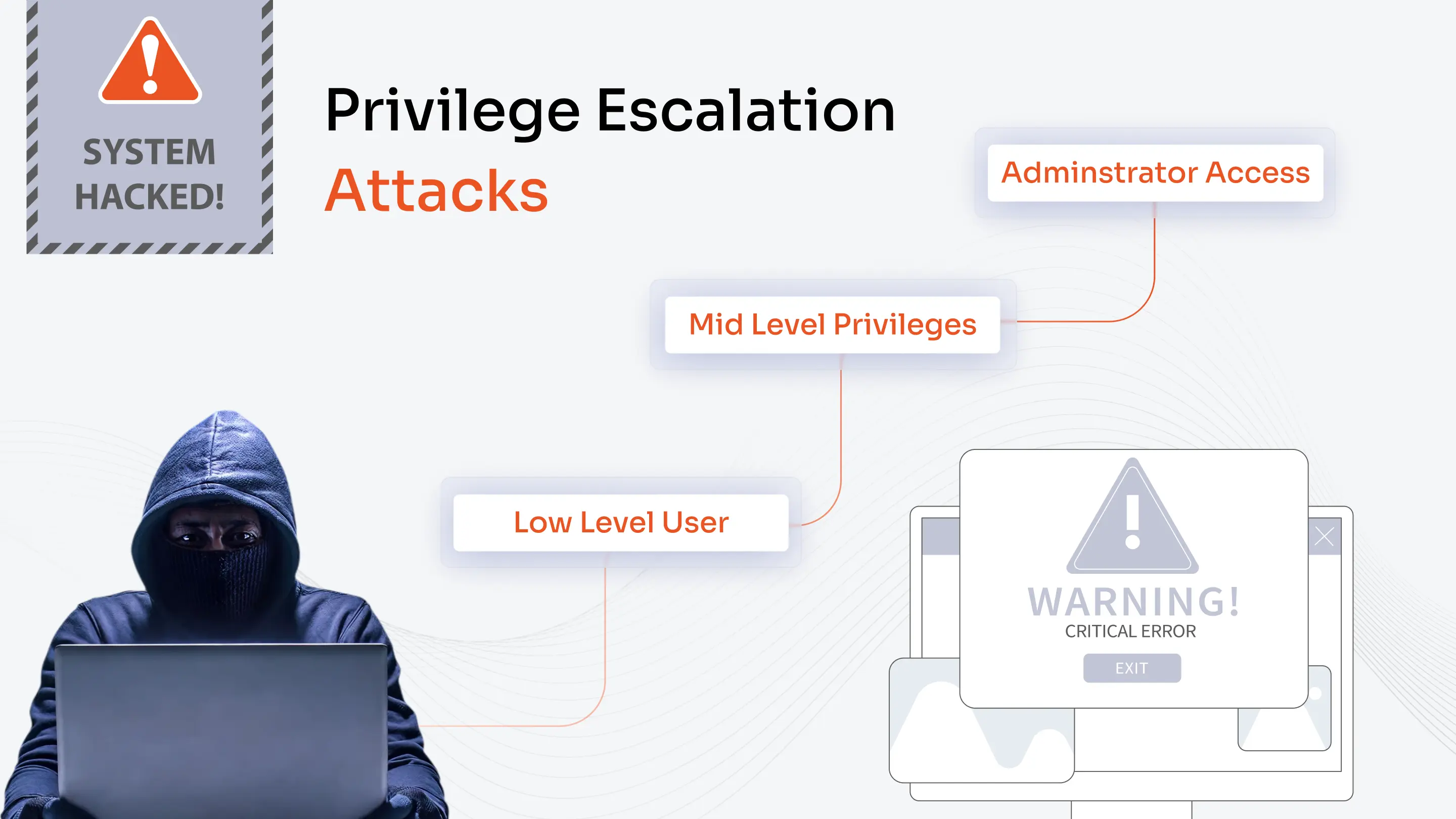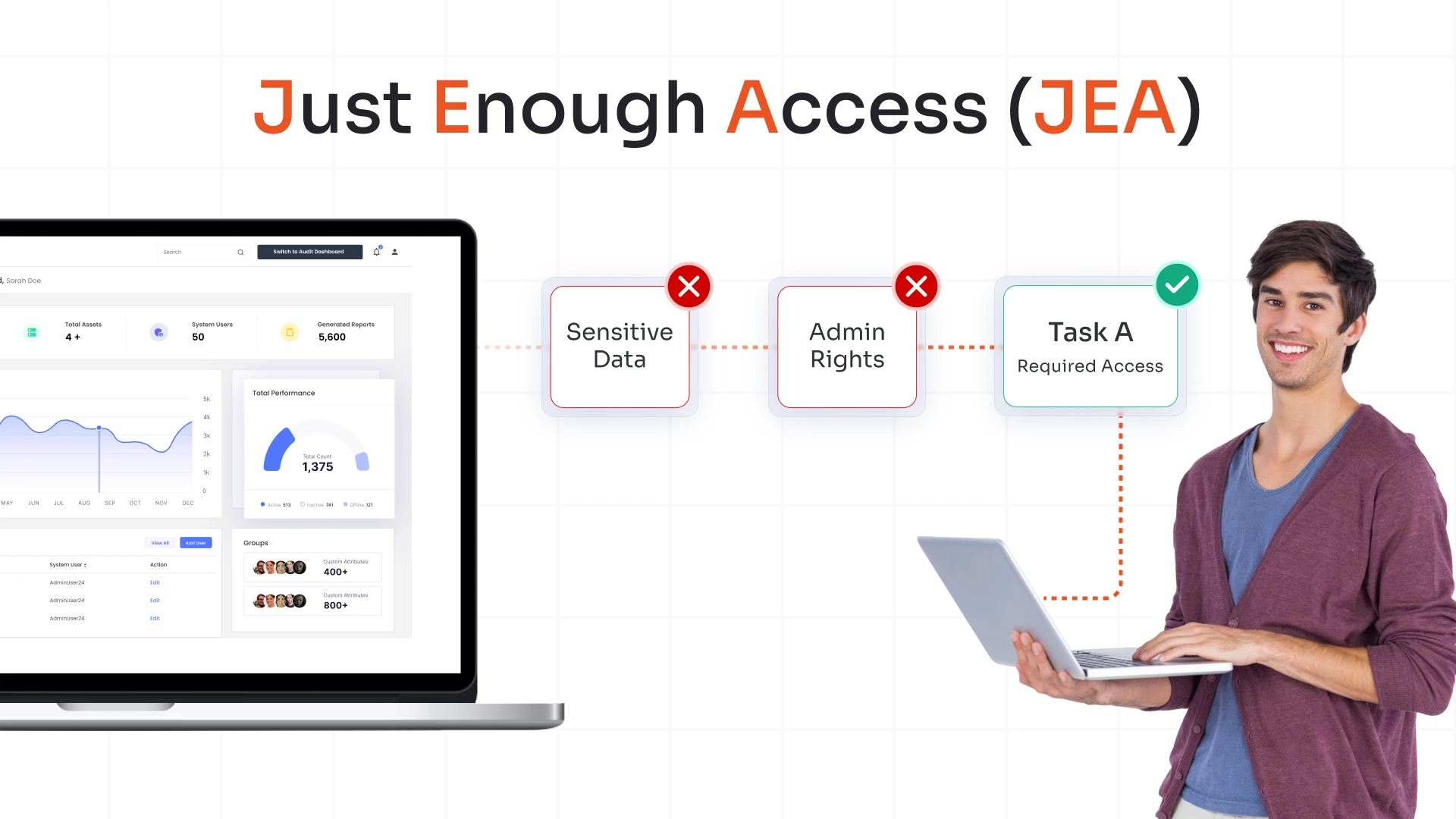Rise in cybersecurity threats, insider attacks, and data breaches are compelling organizations to adopt better access management solutions such as Privileged Access Management (PAM) and Cloud Infrastructure Entitlement Management (CIEM).
PAM is a go-to option for those looking to safeguard high-profile or privileged accounts by safely locking away their credentials in a vault, and controlling access to them.
CIEM is a perfect solution to ascertain that only the right people have access to accounts on cloud platforms. This is carried out through continuous monitoring and reducing attack surface.
Let’s have a look at them both in detail.
What is CIEM?
Cloud Infrastructure Entitlement Management (CIEM) behaves like a security guard for the cloud architecture such as CIEM Azure and CIEM AWS. It makes sure that only the right people, machines, and applications have access to the cloud databases, and nothing more or less.
In technical terms, CIEM is a security solution, engineered to manage, monitor, and enforce access permissions within the cloud platform. It basically helps organizations to control permissions (who and what can access).
Top 4 Use Cases of CIEM
The scope of Cloud Infrastructure Entitlement Management goes far and wide, out of which the top four use cases of CIEM are listed below:
1. Minimizing Organization’s Attack Surface
In Cloud Infrastructure Entitlement Management (CIEM), attack surface is the total number of entry points that cybercriminals can exploit to gain access to cloud platforms. CIEM helps to reduce the attack surface by safeguarding cloud entitlements, assuring that the permissions are right-sized and evaluated continuously.
2. Creating Remediation Recommendations
CIEM security solution helps organizations to detect excessive permissions, misconfigurations, and possible risks, by simply offering actionable remediation recommendations. Additionally, some of the CIEM tools integrate with Identity and Access Management (IAM) solutions, providing an in-depth understanding on how to reduce vulnerabilities.
3. Machine Identities
Machine identities, along with workloads, service accounts, containers, and APIs need access controls, and CIEM plays a critical role in safeguarding them. So, basically CIEM maps machine identities to their complementary permissions, thereby averting overprivileged access. Also, it helps to implement access policies for cloud workload with no human intervention.
4. Continuous Monitoring
Cloud platforms are dynamic in nature, and CIEM continuously evaluates entitlements and identities to avoid unauthorized access. It gives real-time audits by reporting suspicious activities. It also revokes precarious permissions in response to cyber threats.
These were the top four use cases of CIEM that are changing the nature of security in today's high-risked digital environment.
Key Features of CIEM
CIEM is packed with features and functionalities that sets it apart from the PAM solution. Let’s have a look at the four common features of CIEM.
1. Visibility into Cloud Identities and Entitlements
CIEM solution gives a real-time and clear picture of who has access to which files, apps, or media on cloud. Compare it with a dashboard that lists out every user, who is currently checking a database, or has accessed a file in the past. This helps to filter our people with unwanted controls, making the cloud a secure place to store data.
2. Overprivileged Users, Roles, and Services Detection
There can be users who have permissions beyond their paygrade. This poses a grave internal security risk. CIEM detects such users, filters them out. Later, the privileges of these users are taken away.
3. Principle of Least Privilege (PoLP)
In the Principle of Least Privilege (PoLP), only the bare minimum accesses are given to the users or services, nothing more and nothing less. Let’s understand it with an example: if an intern only needs to view the reports, then CIEM solutions makes sure that the intern cannot change or delete any data. Permissions can be changed as per the job roles, thus maintaining tight security.
4. CIEM Integration with IAM and SIEM
CIEM is designed to work with IAM and Security Information and Event Management (SIEM) solutions for ameliorated monitoring and security. For instance, if a hacker tries to hack into sensitive data, CIEM immediately sends alerts to the SIEM system for investigation, and IAM can be used to manage permissions. This integration makes a cloud environment safe heaven for organizations.
What is Privileged Access Management (PAM)?
PAM is a cybersecurity strategy, which focuses on securing, managing, and monitoring access to sensitive resources in an organization. This is used to safeguard organizations against threats, such as frauds, identity thefts, and misuse of privileges.
PAM is a comprehensive cybersecurity solution, which includes technology, people, and methods, to track, audit, and control human and non-human activities and privileged IDs in an IT environment.
Privileged accounts have permissions to confidential or sensitive data, and if exposed can leave a lasting negative impression.
So, to avoid such scenarios, miniOrange PAM solution is used to safeguard the identities of high-profile accounts. PAM makes use of strong authorization, authentication, and auditing tactics to control and monitor privileged activities.
Top 4 Use Cases of PAM
PAM is widely used in IT environments for securing access and handling user credentials. Here are the top four use cases of PAM that you can relate to.
1. Credential Management
PAM solution protects privileged accounts by storing credentials in a secure password vault. For example, Hardware Security Modules (HSM) integration with PAM is one of the ways to safeguard credentials against external or internal cyber threats.
2. Secure Access
Privileged Access Management with session management, along with access controls is quite useful for managing data. It helps protect essential information, and ascertains all user activities are recorded and tracked around-the-clock. With PAM, this data can be checked remotely via secure lines.
3. Compliance Audits
With PAM, organizations can avail comprehensive compliance audits, showcasing user account activity and checking whether all compliance standards are met. In case of healthcare organizations, they would look whether they’re Health Insurance Portability and Accountability Act (HIPAA) compliant or not. Similarly, compliance audits for other protocols such as GDPR are also conducted with PAM.
4. Response to Incidents
Simply access logs to organization’s privileged accounts using a PAM security solution. A detailed report on who has illegally accessed an account is prepared, which helps the response teams to act swiftly against compromised accounts.
Key Features of PAM
1. Session Monitoring and Recording
PAM tools are capable of recording and watching over everything a privileged user does during a login session. For instance, if an admin logs into a server, PAM will record their activities with session monitoring and recording tools to understand where the files were accessed or which commands were run by them.
2. Privileged Account Discovery (PAD)
The Privileged Account Discovery feature finds and lists all privileged accounts such as admins, executives, or editors across the organization. Amongst them, unused or hidden accounts are also detected, which can be removed later.
3. Multi-Factor Authentication (MFA)
Multi-Factor Authentication (MFA) with PAM enables users to prove themselves who they are in more than one way. For example, an admin must enter their password, enter an OTP sent to their phone, and then log into the system.
4. Detailed Privileged Session Logs
Under PAM audits, every action conducted by a user while using a privileged account is recorded and logged in detail, drafting a record of who did what and when. For instance, if a user changes a file, then the log would show exactly what was done and by whom.
5. Vaulting and Rotating Passwords
PAM stores passwords in a secure vault and changes or rotates them periodically, so that they don’t get reused or stale. For instance, the password for a certain file is kept in an Enterprise Password Vault (EPV), after each use, PAM changes the password.
CIEM vs PAM: Major Differences
| Parameters | CIEM | PAM |
|---|---|---|
| Aspect | CIEM prevents compromises and it knows what would happen in case of adverse scenarios. | PAM is used for authentication, monitoring, and management of privileged accounts. It also ascertains that only authorized users can gain access to privileged accounts. |
| Purpose | CIEM handles all entitlements and identities on cloud, and reduces extensive permissions; plus enforces least possible privileges. | PAM secures, monitors, and controls privileged accounts and their permissions on both on-prem and cloud platforms. |
| User Scope | CIEM includes all identities on cloud such as applications, human users, IoT devices, machine identities, and more. | PAM usually includes human users like admins or super users, and service accounts. |
| Core Functionality | The core functionality of CIEM includes offering visibility into cloud permissions and to support compliance for international protocols such as HIPAA or GDPR. It also automates the Principle of Least Privilege. | PAM lists out privileged accounts, enforces session recordings, and secures credentials in a vault, for example, HSM. |
| Deployment Model | For CIEM, it is cloud (either single-cloud or multi-cloud environments). It also integrates with cloud-native tools and cloud providers such as AWS or Azure. | Conventionally, PAM was deployed on-premises and hybrid, but in today’s time it is deployed on cloud and also works in a hybrid setup. |
CIEM vs PAM: Which One You Must Choose?
Both CIEM and PAM offer features and functionalities suitable for specific use cases. For instance, CIEM is a powerful tool when it comes to identifying risky paths that could be exploited in complex cloud settings. And PAM ensures strong authorization and authentication to privileged users only.
Using both may offer layered security, but it isn’t necessary to use them together. Advanced PAM solution offered by miniOrange includes several features which are offered by CIEM. These include least privilege enforcement, entitlement monitoring, cloud analytics, and more.
The miniOrange PAM features simplify the complexity and protection needed for both cloud and on-premise environments, allowing it to be a practical choice for organizations looking to seek a comprehensive IAM solution.
FAQs
What challenges do organizations face without CIEM or PAM?
Without CIEM or PAM, organizations are at security risks, which will leave them vulnerable to credential thefts, non-compliance issues, operational inefficiencies, and cloud misconfigurations.
Can CIEM and PAM be used together?
Yes! CIEM and PAM can be used to offer a layered security solution. Here, CIEM can be used for managing cloud entitlements and permissions, whereas PAM helps to reduce the risk of credential-based attacks.
Can miniOrange’s PAM solution replace a general CIEM tool?
miniOrange PAM solution is developed to handle high-risk accounts and to secure credentials on cloud and on-premises. CIEM is also used to secure user accounts, but miniOrange PAM alone is enough to handle privileged account access in most of the scenarios.







Leave a Comment